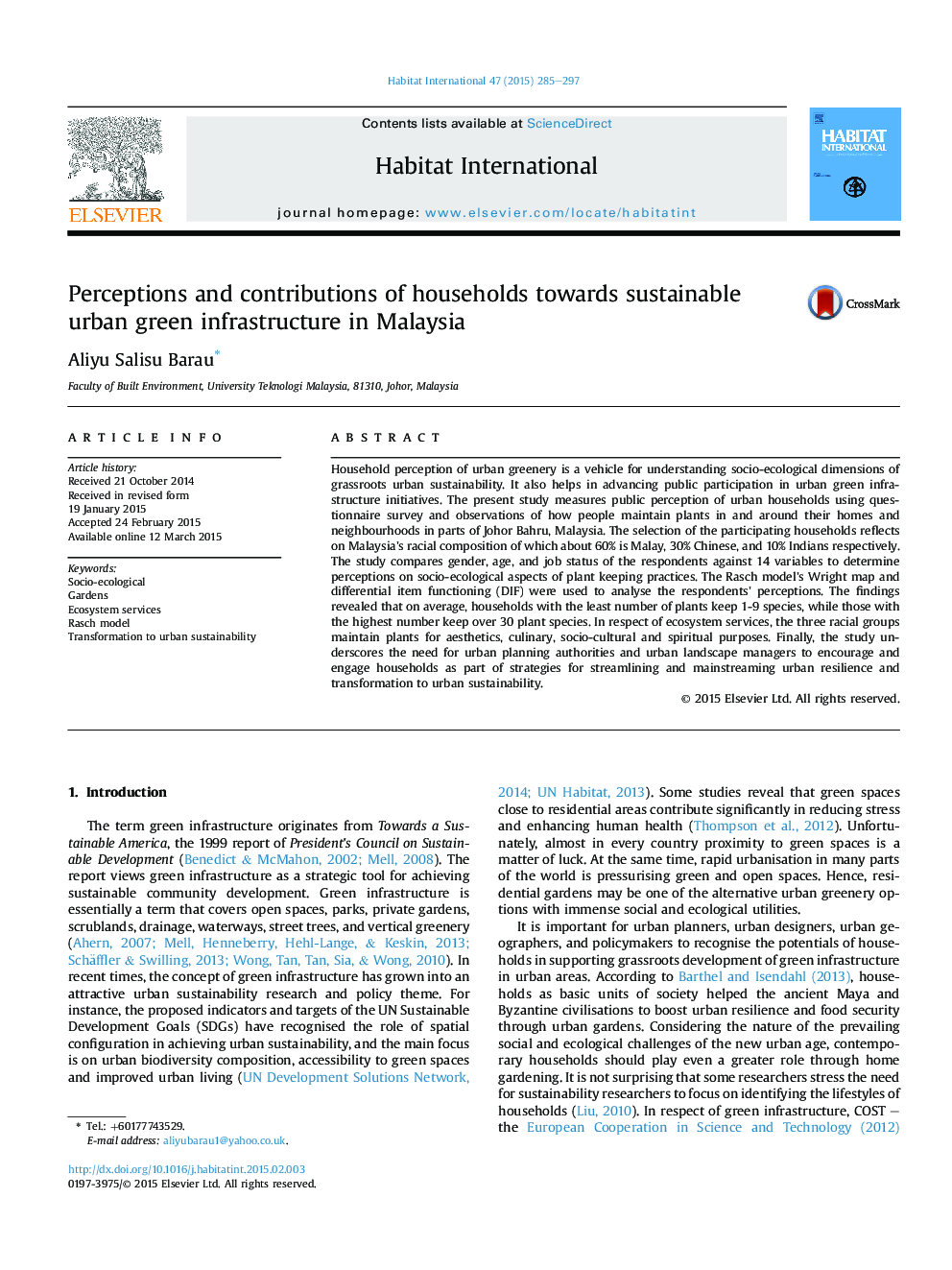| Article ID | Journal | Published Year | Pages | File Type |
|---|---|---|---|---|
| 1047902 | Habitat International | 2015 | 13 Pages |
•Household plant keeping is crucial for urban green infrastructure development.•Household plants support the cultural, culinary and spiritual needs of local people.•Urban green infrastructure makes more sense when its starts from household level.•Households play a complementary role to public policy on the green agenda.
Household perception of urban greenery is a vehicle for understanding socio-ecological dimensions of grassroots urban sustainability. It also helps in advancing public participation in urban green infrastructure initiatives. The present study measures public perception of urban households using questionnaire survey and observations of how people maintain plants in and around their homes and neighbourhoods in parts of Johor Bahru, Malaysia. The selection of the participating households reflects on Malaysia's racial composition of which about 60% is Malay, 30% Chinese, and 10% Indians respectively. The study compares gender, age, and job status of the respondents against 14 variables to determine perceptions on socio-ecological aspects of plant keeping practices. The Rasch model's Wright map and differential item functioning (DIF) were used to analyse the respondents' perceptions. The findings revealed that on average, households with the least number of plants keep 1-9 species, while those with the highest number keep over 30 plant species. In respect of ecosystem services, the three racial groups maintain plants for aesthetics, culinary, socio-cultural and spiritual purposes. Finally, the study underscores the need for urban planning authorities and urban landscape managers to encourage and engage households as part of strategies for streamlining and mainstreaming urban resilience and transformation to urban sustainability.
